Beth Tabler's Blog, page 196
April 6, 2022
The Books that Made Me: Blade of Tyshalle by Matthew Woodring Stover
I’d hit a wall.
It was 2001, and I could not find books I loved the way I’d loved them just a couple years prior.
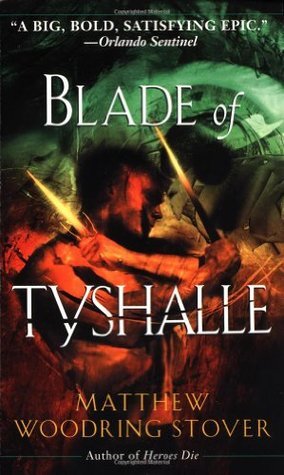 I had no internet. I had friends who liked fantasy books, but the ones they recommended, I’d already read. When I did try out a new book, I’d finish it out of obligation and a desperate hope that it would get better.
I had no internet. I had friends who liked fantasy books, but the ones they recommended, I’d already read. When I did try out a new book, I’d finish it out of obligation and a desperate hope that it would get better.
So many of the books built around the same conflicts—the indomitable dark lord, raging barbarians, getting that really nice monarch back on the throne instead of their jerk brother. I lucked out occasionally—(Robin Hobb!)—but I, who had written eight fantasy novels while in high school, was becoming disillusioned with fantasy.
But, drifting through the bookstore one day in 2001, my eye was drawn to a cover. Bless whoever picked Dave McKean of Sandman fame to do the cover of Blade of Tyshalle. The title made me think it was going to be another Magical Sword Adventure, and had that cover not been as incredible as it was, I may have kept drifting. But I read the back cover. And then the prologue and the chapter zero.
Now, it should be noted that Blade of Tyshalle is in fact book two in a four-book series, but I had no idea at the time I picked it up. I thought it was a really fascinating choice to read about the hero after he’d saved the day, and how even in saving it, in getting the girl and having the happy ending, he’d lost an essential part of himself. While Heroes Die, the first book, is an extremely well-done action-adventure, I am extremely grateful I started with Blade of Tyshalle instead.
Again: this book came out in 2001, which means that I was extremely used to heroes being coming of age naifs with snarky sidekicks and wise mentors. Grimdark was not yet on the horizon. But not only was the hero, Hari Michaelson (also known as Caine) significantly darker than I was used to then, a re-read last year reminded me just how much more compelling he was than most of the other grimdark protagonists.
The most obvious, of course, was the duality of Hari Michaelson and Caine. The setting of Blade of Tyshalle is a near-future dystopian Earth in which corporations control everything, and they’ve invented a way to send people to another reality, one filled with all the traditional tropes of fantasy, called Overworld. They send people there with science fictional gizmos that let people watch whatever the Actor’s doing, and part of the fun is that these aren’t movies; the Actors might well get themselves killed on whatever adventure they’re on. Hari Michaelson, at the start of Blade of Tyshalle, is an administrator, doing a ton of bureaucratic work, while Caine had been a celebrity assassin. But Hari can never be Caine again; after all, he’s been paralyzed by the climactic events of the first novel, Heroes Die.
Hari believes he’s Hari forever. His wife believes it. His bosses believe it. The only people who don’t are his mentally ill father, and his nemesis who has become his friend. That nemesis is largely his friend because he’s one of the few people who still treat Hari like a threat, something that part of him needs.
Caine is the threat. He’s direct, he’s cunning, and he will not stop. If you give him a target, he will find it and destroy it. And much of the opening is him unable to do much because he’s still trying to be Hari, and because the villains are hitting him from all sides without showing their hand.
The characters were all compelling and the story ricocheted in wild directions, all due to the characters—not just Caine, and not just the villains, but all the side characters—having agency and competency. Stover writes a better story than most, and a lot of that is because it’s constantly shifting as they act and react.
He also filled the book with discussions on philosophy and ethics and morality, yet did it in a way that it never stuck out. They were simply smart characters trying to persuade each other. Caine stands out from a lot of grimdark heroes because while he is fundamentally violent, he’s also protective of anyone he counts as his family.
The other thing that makes this book important, the reason it’s my inaugural pick in the Books That Made Me, is that it directly led me to other books. As I said at the beginning, I had no one to recommend books to me, but I read interviews with him and picked up some of the authors recommended—from classic authors like Leiber and Zelazny to (at the time) newcomers like China Mieville.
So. Thanks to that book, one that came along at the exact right time to re-ignite my love of the genre.
Check Out Blade of Tyshelle
The post The Books that Made Me: Blade of Tyshalle by Matthew Woodring Stover appeared first on BEFOREWEGOBLOG.
April 5, 2022
Review – Legends & Lattes: A Novel of High Fantasy and Low Stakes by Travis Baldree
LEGENDS AND LATTES: A NOVEL OF HIGH FANTASY AND LOW STAKES by Travis Baldree is one of those rare novels that comes out that I have absolutely nothing but praise for. It fills that Terry Pratchett-shaped hole in my heart. While not to the level of that grandmaster of mirth, his world is evocative of Discworld and tells a cozy story about an orc barbarian who wants to open a coffee shop. The juxtaposition of the modern of the fantastical doesn’t have as much zing but it is still deeply amusing and makes this one of my favorite reads of 2022.
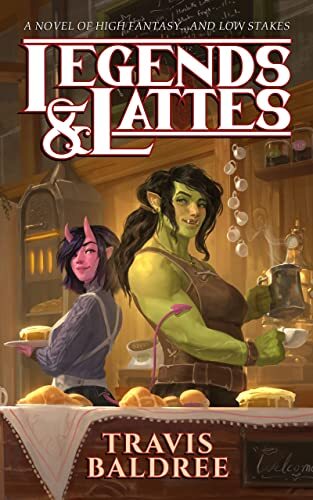 As mentioned, the premise is an orc barbarian has decided to give up her life of violence and treasure hunting for one of serving coffee. The problem is no one knows what coffee is. In the city of Thune, it’s only known as a gnomish drink no one has tried if anyone has heard of it at all. Spending her life savings on buying a livery, Viv starts hiring a hobgoblin carpenter and a tiefling (excuse me, succubus) waitress to help spruce up the place.
As mentioned, the premise is an orc barbarian has decided to give up her life of violence and treasure hunting for one of serving coffee. The problem is no one knows what coffee is. In the city of Thune, it’s only known as a gnomish drink no one has tried if anyone has heard of it at all. Spending her life savings on buying a livery, Viv starts hiring a hobgoblin carpenter and a tiefling (excuse me, succubus) waitress to help spruce up the place.
Viv has a secret, though. When she was on her last adventure, she pocketed a magical object called the Scalvert Stone. Supposedly, it will result in whoever possesses it having great fortune. One of Viv’s former adventuring companions, Fennus, has become obsessed with the idea she cheated him out of something illustrious. There’s also a local Thieves Guild in town that is used to collecting protection money but actually doesn’t want to resort to violence. They also don’t want Viv setting an example that other people can’t pay their dues.
A very interesting twist in this book is the fact that it is all about Viv wanting to avoid getting into any violent encounters. So much fantasy fiction is devoted to action and bloodshed, it’s fascinating that Viv’s highest aspiration in life is not to have to kill anyone ever again. It’s not something she’s ashamed of in her past or guilty over. It’s just something she doesn’t want to do anymore and feels like she’ll fall back into old habits if she does.
The book’s low stakes are, indeed, also low stakes. The only thing at stake is the Scalvert Stone, which Viv isn’t sure works, and her coffee shop. There’s no worlds to save, maidens to rescue, monsters to slay, or demons to banish. Thune really seems like a genuinely nice place as compared to most Dungeons and Dragons-esque settings. Much of the typical fantastic racism is not to be found and dwarves work with orcs as well as ratkin or gnome without much in the way of issues. The worst example of it is the sexual harrassment that poor Tandi gets for being a succubus.
There’s not even any real villain in the books, though Fennus comes closest. The Thieves Guild is a lot more practical than most criminals in fantasy. Their leader is actually interested in the idea Viv’s coffee shop could make the area more valuable by attracting new business, which certainly benefits the thieves in the area. Even Tandi’s stalker, Kellin, is someone who is rather easily intimidated by Viv’s presence. This is a novel about following your dreams and figuring out what you will do to achieve them.
It’s just fun.
Check Out Legends & Lattes: A Novel of High Fantasy and Low Stakes by Travis BaldreeThe post Review – Legends & Lattes: A Novel of High Fantasy and Low Stakes by Travis Baldree appeared first on BEFOREWEGOBLOG.
April 4, 2022
REVIEW – Crowbones by Anne Bishop
I have read my fair share of urban fantasy, romantic, tragic, or otherwise. As a reader and reviewer, it has become a challenge for me to seek out series in that elusive “other” category, ones that straddle a line of horror and urban fantasy such as Neil Gaiman’s Neverwhere and American Gods or A Discovery of Witches by Deborah Harkness. These books are different. They excel in bringing something fresh to the reader. The Others series by Anne Bishop has brought life to the tired genre of the supernatural urban fantasy genre with her brilliant take on the relationships between humans and the Terre Indigene in Crowbones.
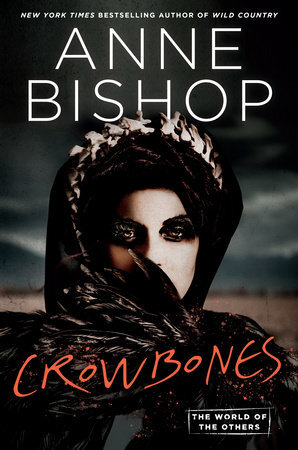 “Don’t matter if you caw, Don’t matter if you shout. Crowbones will gitcha If you don’t watch out! —Crowgard rhyme”
“Don’t matter if you caw, Don’t matter if you shout. Crowbones will gitcha If you don’t watch out! —Crowgard rhyme”
Every culture, human or other, has a boogeyman. A creature that will come to getcha if you aren’t a good kid. Bishop explores that idea in Crowbones. Vicki Devine, whom we met in book 6 of The Others series, Lake Silence, is back again as the central figure of Crowbones. Vicki, the owner of the Jumble, a resort that does some light tourism around folks wanting to interact with The Others, is hosting a gathering to celebrate Trickster Night, The Others form of Halloween. There are some funny antics and miscommunication between the humans and the terre indigene. What kind of costume is scary but not too frightening to become other.
We first meet Vickie in a previous novel, Lake Silence. In that novel, she is a woman recovering from a traumatic relationship and divorce and attempting to start a new life in a new town. I find her a compelling character, that while she is broken and worn down from hardship, Vickie manages to have inner strength. Enough that the Others understand that she is special and a cut above other humans.
“He wasn’t sure what disturbed him more—that the Others were able to excavate that much dirt from either side of the road and pile it into a hill that quickly . . . or the smiley face made out of boulders that was pressed into this side of the mound.”
Each of the stories in this series of books revolves around a mystery. This one isn’t an exception. Something rotten affects the terre indigene, and individuals who act as judges have come to bring sentences on humans and terre indigene alike. Office Wayne Grimshaw, Julian Farrow, and Ilya Sanguinati have to work together before judgment is cast on all of them.
The plotting and pacing are tight; it keeps you going. You know from the first few pages that this will be a mystery story. But it lacks the tropey feel of a “who done it” type story. Vickie is someone trying to keep the crows safe, and the three individuals, Wayne, Julian, and Ilya, are trying to do the same. There are certainly some bloody and violent scenes. Bishop has never shied away from the darker side of things, which works for me as a lover of horror and grimdark. Crows are picking at eyeballs, basically doing what crows do.
Crowbones is another exciting addition to the world of The Others that continues to be interesting. We learn that even the strongest and wildest predators of the terre indigene have boogeymen that go bump in the night. Check it out.
The post REVIEW – Crowbones by Anne Bishop appeared first on BEFOREWEGOBLOG.
April 1, 2022
Five Kindle Unlimited Recommendations For April 2022
Kindle Unlimited is a service that can theoretically provide you with limitless numbers of books for the price of one normal release every month. This is a tremendous blessing for those of us who are fast readers. I pretty much have read every single Red Sonja comic ever written thanks to Dynamite Entertainment putting almost all their comics on the service.
However, what we here at Before We Go want most is good Kindle Unlimited books. As such, here is a recommendation of a bunch of entertaining ones that I’ve enjoyed and can say rise above the dross.
If you wish to see previous recommendations, go here:
1. Five Kindle Unlimited Recommendations for January
https://beforewegoblog.com/five-recommended-kindle-unlimited-books/
2. Five Kindle Unlimited Recommendations for February
https://beforewegoblog.com/five-recommended-kindle-unlimited-books-february-edition/
3. Five Kindle Unlimited Recommendations for March
https://beforewegoblog.com/five-kindle-unlimited-recommendations-for-march-2022/
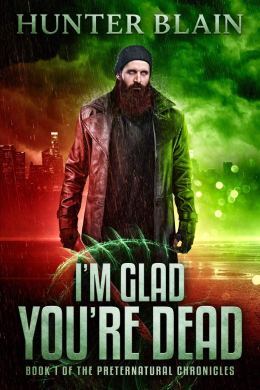 1I’m Glad You’re Deadby Hunter Blain
1I’m Glad You’re Deadby Hunter BlainI’m a huge fan of the Dresden Files and am always looking forward to something similar. Hunter Blain did a fantastic job with the character of John Cook, vampire. He’s the snarky wisecracking yet tortured sole remaining vampire in the world. He’s got a fairy princess lover, a werewolf best friend, and priest telling him what monsters to hunt. Great character and great series.
What it is about?After helplessly witnessing the execution of his family, John is approached by a strange man that promises the power of revenge, for a price; his life for the ability to walk the mortal plane for eternity. Fast forward several hundred years where John finds himself with an unlikely ally, Father Thomes Philseep. Together, they have the holy mission of doing God’s will by protecting this plane from the nefarious evil that seeks the end of times. After centuries of feeding on mortal blood, if John’s blackened soul can get a little bleaching at the same time, well, all the better. Too bad the warlock, Nathanial Locke, who is a lackey of Satan himself, has other plans in mind for John. Despite his platinum tongue and razor wit, John might need some help from a supernatural buddy who has a hankering for meat and sheds in the winter. Follow John the vampire as he travels through the centuries learning his powers with his teacher, Ulric, and fighting to control his supernatural predatory side to use his powers for good.
Check it out yourself
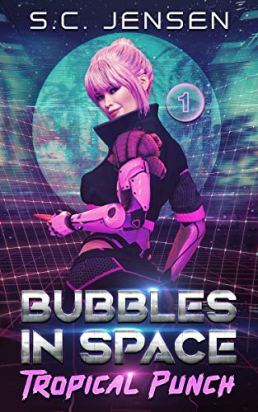 2Bubbles in Space: Tropical Punchby S.C. Jensen
2Bubbles in Space: Tropical Punchby S.C. JensenBubbles in Space is a book I’ve recommended before and will continue to do so. Bubbles Marlowe is the worst detective in Holo City. She is barely functional, frequently outwitted, and more interested in survival than the truth. So when she accidentally makes a mortal enemy, she decides to flee to the one place she might get away: a space cruise ship.
Review – Tropical Punch by S.C. Jensen
What it is About?Strippers, Drugs, and Headless Corpses…
All in a day’s work for Bubbles Marlowe, HoloCity’s only cyborg detective.
What do an anti-tech cult, a deadly new street drug, and the corrupt Chief of Police have in common?
It’s a question Bubbles can’t afford to ask. Last time she got curious it cost her job, a limb, and almost her life.
She vows to stay out of police business. But with a newly minted cybernetic enhancement, a semi-legal P.I. license, and a knack for asking the wrong kind of questions… Vows are made to be broken, right?
When a seemingly straightforward contract takes a dark turn, heads literally roll. Unless she wants to take the fall for the murders Bubbles needs to cut town on the double. Too bad she’s flat broke.
And now, she’s being hunted.
In a world where dreams can be made real for the right kind of dough, nothing is as it seems. One thing is clear, though. The dream is becoming a nightmare.
As the body count stacks up, Bubbles realizes she’s made a terrible mistake.
Can she figure out who is behind the murders before she loses her head?
Warning: Don’t read this book if you hate fun, glitter, sassy robotic pigs, or hard-boiled badassery. Raymond Chandler and Dashiell Hammett are rolling in their graves, but this is all their fault.
Get Punched! Buy it now!
Check It Out Yourself 3Legends and Lattes by Travis Baldree
3Legends and Lattes by Travis BaldreeSometimes you want a very comforting and well-done fantasy with low stakes. Legends and Lattes is about an orc barbarian who decides to open a coffee shop. There is very little violence and the ultimate goal is to get away from adventuring. It has a Pratchett-like quality to it and that makes it all the better.
What it is about?High Fantasy with a double-shot of self-reinvention
Worn out after decades of packing steel and raising hell, Viv the orc barbarian cashes out of the warrior’s life with one final score. A forgotten legend, a fabled artifact, and an unreasonable amount of hope lead her to the streets of Thune, where she plans to open the first coffee shop the city has ever seen.
However, her dreams of a fresh start pulling shots instead of swinging swords are hardly a sure bet. Old frenemies and Thune’s shady underbelly may just upset her plans. To finally build something that will last, Viv will need some new partners and a different kind of resolve.
A hot cup of fantasy slice-of-life with a dollop of romantic froth.
Check It Out Yourself
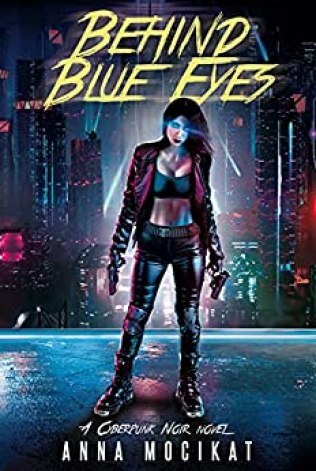 4Behind Blue Eyes by Anna Mocikat
4Behind Blue Eyes by Anna MocikatIn the future, the world is ruled by three competing megacorporations. Nephilim is a cyborg super-soldier working for the Guardian Angels secret police force, hunting dissidents and resistance. However, an accident during a mission results in her regaining her free will. It’s a fantastic action thriller and a great sci-fi drama.
What it is about?They are the perfect hybrid between human and machine. They are the next step in the evolution of mankind. And when they come after you, nothing in the world will save you…
Welcome to the year 2095.
Society has overcome everything that made human life miserable. It has become perfect — so perfect that it needs killer cyborgs to hunt down anyone who disagrees with it.
Nephilim isn’t just any elite death squad member, she is the best. Genetically and cybernetically enhanced, she and others like her strike terror wherever they go. Knowing nothing besides this lifestyle, Nephilim believes that she’s part of a righteous cause.
But everything changes for her after a hostile EMP attack.
She suffers a severe system glitch. Disconnected from the grid, for the first time in her life, she begins doubting the system.
Shortly after the attack, she meets Jake, a 100% biological human, and she falls in love with him. Jake helps her discover that everything she had believed in was a lie.
But there is no walking away from the system. And soon, Nephilim finds herself hunted by members of her own death squad.
In an era of deception, who can she trust? And in this brave new world, is there a place for love between a human and a cyborg?
Behind Blue Eyes is a fast-paced, cinematic action story in a dystopian setting. It’s a modern-day version of 1984 – on steroids.
Check It Out Yourself
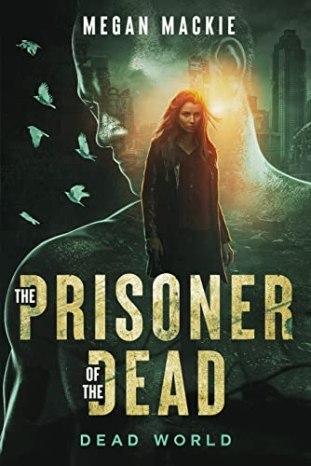 5Prisoner of the Dead by Megan Mackie
5Prisoner of the Dead by Megan MackieYoung Adult dystopianism was something that exploded and then burned out quickly but created some true modern-day classics. I don’t know if Prisoner of the Dead will be listed with them in a decade but it’s a really enjoyable book that stands up with my favorite. It’s a zombie survival novel with a twist: immortals and the fact the zombies can be cured. What is justified in such a world? How will its two protagonists survive in such a place? What will they do to and for each other?
What it is about?Trapped in an endless cycle of life and death…
When civilization fell generations ago, it seemed to mark the end of humanity… but then the undead inexplicably returned to life. Again and again, the plague rose, the zombies thrived and were then reborn.
Into this horrific apocalypse came Baron, a wild man from nowhere, onto the vestiges of the human world. After his keen survival instincts lead him to kill a strange man, Baron finds himself imprisoned by an even stranger woman, the child of immortals who might hold the key to ending the vicious cycle once and for all.
But only if this unlikely pair can survive the next outbreak…
Check It Out YourselfThe post Five Kindle Unlimited Recommendations For April 2022 appeared first on BEFOREWEGOBLOG.
Cover reveal!! Duckett & Dyer – The Mystery Of The Murdered Guy by G.M. Nair
 The Mystery Of The Murdered Guy Excerpt:
The Mystery Of The Murdered Guy Excerpt:Armitage Pembroke glared out the window of his study. The roiling black clouds hurled rain drops like daggers against the reinforced glass. As the view continued to darken, Pembroke found his aged, gaunt features increasingly reflected back at him as some sort of cruel taunt.
Wrinkling his nose in displeasure, he shuffled away to rest his creaking bones on the wingback chair beneath his looming bookshelves.
In an effort to ignore his aches and pains, he grumbled to himself as he sat down. It had been 30 years since his third wife Mathilda – now long his ex – had dragged him into that den of grift on his 63rd birthday.
“It’ll be fun,” he remembered her saying. “Just for a lark!”
Hah! Pembroke scoffed to himself. Fun.
Mathilda had always been like that. Carefree. Concerned more with enjoying herself than material goods or ambitions of status. Because, of course, she was young – much younger than him – and therefore free of the sort of baggage he’d accumulated over his long life. It was what Pembroke had originally loved about her. It had made him feel young by association. It was also, unfortunately, what made Mathilda such a goddamned idiot.
But that was his opinion now, older and wiser. Armitage Pembroke, three decades prior, had allowed his love for this woman to make him equally as foolish. Though he was at the top of his game when they met, she had softened him, and he was on the verge of giving up his robber-baron lifestyle for an ordinary one with her.
But it was not to be.
And, technically, he had the psychic to thank for that.
Once they were within the psychic’s inner sanctum – little more than a disused storefront disguised as a mystical hovel – a young woman clad in gypsy clothes parted sets of tattered purple and gold cloth and glided into view.
Taking a seat before them, she assured them – through an outrageous accent – her predictions were one-hundred percent accurate. Client testimonials allegedly proved she had never been wrong before, and she never would be. And that she would stake her reputation on it.
Pembroke had rolled his eyes, for which Mathilda elbowed him in the ribs, so he merely nodded at the so-called psychic to proceed.
“Armitage Pembroke,” the woman’s smooth, yet spindly hands hovered over the glass ball in the center of the table, dancing arrhythmically across the surface. “You are a very wealthy man. You believe that through your hard work and gumption you have built one of the largest corporate empires in the world. And it has enabled you expand your reach and eat well. But it has garnered you many rivals. . . and enemies.”
Pembroke had shrugged, with a condescending smirk. All of that had been true, indeed. But nothing one couldn’t garner from a careful reading of the trades – or, for commoners, the Wall Street Journal. But that was the old him. The greedy, acrimonious life he’d led would soon be fading in the rearview. It would just be him and Mathilda. He squeezed her hand softly.
The psychic continued, “Your competitors wish you dead so they can usurp your throne. The laborers you’ve exploited to earn your riches wish you dead so they may be free of your penny-pinching wages. Even members of your family wish you dead so they can reap the rewards of your horded wealth.” The psychic paused and met his grey eyes with her green gaze. “And they will be granted this boon in time.”
Pembroke’s eyes narrowed, and darted quickly to Mathilda at his side, who was drumming her fingers on her knees, nervous. This was no longer a lark. This was out of line.
“Wait a minute,” he started. He felt the weight of her words pushing down on his shoulders. And more worrisome, the truth of them.
“Eventually,” the woman continued, unabated, “you will be all but robbed of your riches and you will die at the hand of the one person who wishes it the most. Be aware of your transgressions, Armitage Pembroke, for no matter how you proceed they will come due, and your debt will be paid in gold and blood.”
“Alright, that’s enough!” Pembroke had shouted, leaping from his seat. He grabbed Mathilda’s wrist and dragged her through the purple drapes and out of the building. “That was idiotic and sadistic.”
“It – it was just a bit of fun, Arm,” she said. “I’m sure she didn’t mean anything by it. It’s all fake, anyway.”
“You’re damn right it’s fake. None of that garbage is going to happen! And I can make sure it doesn’t!” He yelled out of anger or, now with the benefit of hindsight, fear. Fear that cut into his mind. Fear of losing his life. And, if he was honest – really honest – with himself, his riches. And within him, a sense of low, roiling unease that he had quietly suppressed for years was finally bubbling over, with Mathilda in the firing line. She was trying to get him to give up the only thing that had brought him peace of mind in this world. He was Armitage Pembroke, for God’s sake! He had amassed his fortune through wit and bravery, and now all he felt was powerless. He hated that feeling and promised himself he would do everything he could to prevent this psychic’s prediction from coming to pass.
And now he had.
Over the last three decades, Pembroke had invested heavily in the means to stave off the finality of death, at the expense of his company, his relationship with Mathilda and others, and any other minor annoyance standing in his way. He funneled his money into science and technology, forming and acquiring research corporations whose sole purpose was to explore potential avenues for eternal life – exploring concepts he once thought to be bizarre and impossible, and branching occasionally into the realm of mysticism. While they were not all successful, the projects proved to be essential building blocks toward a concrete solution.
It was only when one of Pembroke’s early experimental facilities was destroyed during a freak accident over Christmas that Pembroke found his most promising path to cheating death. And what he found was beyond his wildest expectations.
It was something brilliant.
Something powerful.
Something nigh unstoppable.
Now here he was today, smiling to himself as he sized up the rainstorm outside and found it beneath him. Although it had taken a third of his life, Pembroke had finally discovered a way to conquer nature and become more than any man had ever dreamed.
His smile grew wider as he thought about the host of people he had summoned to his manse tonight, milling about in the sitting parlor below. They were his greatest rivals, his fair-weather associates, and his greedy family, and two asinine private detectives. He had lured them all here, allowing them to blissfully sharpen their knives, certain they would get his coveted wealth after he passed.
Only one thing was certain, however. After tonight, Armitage Pembroke would
Never.
Ever.
Die.
Check Out The New Cover Blurb:
Blurb:After their very public triumph over the sinister machinations of the Future Group, Michael Duckett and Stephanie Dyer’s accidental detective agency has become a household name. Practically overnight, they’ve cemented their place as the city’s go-to sleuths for solving the weird, oddball cases that would confuse and irritate anyone else.
Join them as they tackle the mysteries of a medically licensed vampire, a mysterious mad bomber, a genderfluid reverse werewolf, and the true meaning of Christmas – just to name a few. Meanwhile, an aging billionaire obsesses over his plans to achieve immortality, which could mean dire consequences for the world. But with Duckett & Dyer: Dicks For Hire on the case, what could go wrong?
If you said ‘everything’, you’d be correct.
Buy The Rest of the Series!
The post Cover reveal!! Duckett & Dyer – The Mystery Of The Murdered Guy by G.M. Nair appeared first on BEFOREWEGOBLOG.
March 30, 2022
Review – The Sword of Kaigen by M.L. Wang
For me, its a masterpiece of fiction.
You learn over time that the world isn’t broken. It’s just… got more pieces to it than you thought. They all fit together, just maybe not the way you pictured when you were young.
This review has taken me a few days to write. Please be aware I talk about grief and mental health in this review and it turned into quite a personal piece of writing for me.
I’ve been reading fantasy for a long time. I am in my near-mid 40’s and read Lord of The Rings at the age of 15. I have read fantasy books that have blown me away, taken me to worlds of incredible depth and imagination and introduced me to characters that have had a profound impact on my life.
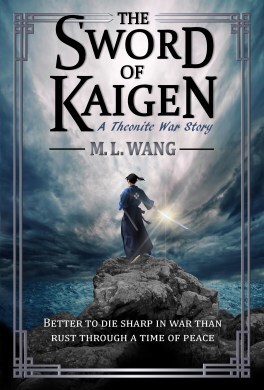 Then Sword of Kaigen came along and completely and utterly changed the way I think about the fantasy genre. M. L. Wang grabbed me by the throat and didn’t let go for 600+ pages of intense, emotionally charged, exquisitely constructed storytelling.
Then Sword of Kaigen came along and completely and utterly changed the way I think about the fantasy genre. M. L. Wang grabbed me by the throat and didn’t let go for 600+ pages of intense, emotionally charged, exquisitely constructed storytelling.
I’m a broken man, but a better one because of this book.
I read this as part of Literature and Lo-Fi’s fantastic month long event, ‘February She Wrote’, promoting and celebrating female authors and authors who use the She/Her pronouns and wow, what a book to start this event with.
The book follows the Matsuda family, leaders of a warrior clan who live in the mountain village Takayubi. They are the first and last defence of the Kaiganese Empire and live by a strict moral code in a feudal system. With the rumblings of war in the wind, the once peaceful lives of the Matsuda’s is about to be shaken to its very core. Embedded in Eastern philosophy and mysticism, Japanese social culture and belief, M. L. Wang has created a rich, complex and engrossing world which draws you in to the point where you can feel the snow between your fingers, smell the blacksmiths smelters and breathe in the sea air.
The world building in Sword of Kaigen is astonishing. What can take some authors a trilogy of books to accomplish, M. L. Wang does so in one volume. The attention to social order; Kaiganese society is patriarchal, boys train to be warriors at the school, girls are raised to be obedient wives to provide children that will bring new generations of warriors to protect the mighty empire. The detail in clothing, how it moves in combat, how it feels against the skin adds a realism to this book that I really appreciated. The geography of the world is clearly laid out and the environment that the characters inhabit is essential to their magic system. More on that later.
The historical and political background of this story is also incredibly detailed and layered with such expertise throughout the novel. M. L. Wang allows exposition to be delivered to the reader when the characters are required to know a new bit of information. Again it gives this book a realistic foundation, conversations feel organic, never giving information for the sake of information. Much exposition is given through action and M. L. Wang excels at battle prose.
The action in this book is brutal, visceral and bloody. Be warned if you are not one for violent fantasy this book may not be for you. As well as battle violence, there is also rape and torture, but it is never excessive or exploitative. M. L. Wang makes every word on the page, every violent action, mean something to the characters, to their motivation. No page space or word is wasted. Everything has meaning in The Sword of Kaigen.
Also essential to the action is the magic system and M. L. Wang has developed an almost scientific approach to the magic. The people of Kaigen have the ability to control water, in all its phases, and thus have the ability to control and alter water on a molecular level. What the characters can achieve with this is so imaginative, so different to other magic systems I have encountered. I was really wowed and caught up in the history and culture behind the different magics. Your bloodline and race determines what type of magic you have and interbreeding brings up many intriguing, and sometimes problematic, issues.
Now to characters. I am still struggling to put into words what an impact some of the characters in this book had on me, especially our female lead. Though the book’s POV is primarily through the eyes of two people, Wang makes sure that all the supporting cast are fully rounded, memorable characters. Everyone of them has a unique voice and presence and there is a huge cast of characters. M. L. Wang has a lot to juggle, but at no point does it feel like she’s struggling to give any one of them room to breathe. Like I said earlier, not a page or word is wasted.
Mamoru is the eldest son of the Matsuda’s. Desperate to make his stoic and strict father, Takeru, proud, fully aware of the responsibility on his shoulder to carry on the tradition and power of the clan, he is beyond his years in maturity, yet, his handle on his emotions is his Achilles heel. His character arc is so good, I loved him. His friendship with foreign student and outsider Kwang is a fascinating one with so many layers to think about and thematically it fascinated me. As his awareness of the political and cultural world outside grows, his belief in his culture starts to waver. I can’t tell you how many themes and topical issues you could talk about in this book. It’s primed for an academic paper.
Then we have Misaki, wife of Takeru and mother of Mamoru. Even now, typing this, I have a lump in my throat and goose bumps. No other character and their journey has impacted me as much as she has in the fantasy genre. Married into the Matsuda family by her father, she has had to repress her violent past and be the good mother and the obedient wife. I cannot stress the complexity and conflict within Misaki enough and M. L. Wang conveys this with such ease and such poetry that even though I am a man and I can never truly understand what Misaki is going through, I was on the journey with her. Wang draws you into Misaki’s mind, into her heart and lays it bare on the page. Sometimes it was so raw and painful it was hard to read, but its so beautifully written I couldn’t peel my eyes away from the page.
Takeru, the Patriarch of the Matsuda family is mostly viewed from the outside in. We get to know him, or not get to know him in some cases, through Mamoru and Misaki. His character was the hardest nut to crack, but boy, what he goes through in the later stages of the book is remarkable and all the resentment or negative feelings I had towards him, changed. M. L. Wang expertly constructs Takeru then deconstructs him. It’s wonderful to behold.
The themes that M. L. Wang weaves through the book are on a macro and micro level. From imperialism, nationalism, insularism to brotherhood, parenthood and free thinking. Hope and grief were the two themes that hit me the hardest and Wang absolutely stripped me of my armour. This book deals with the death of loved ones in a brutally honest and empathetic way and M. L. Wang approaches it with an unvarnished and devastating manner. I have had to deal with the death of my father years ago and what Wang writes about hit me in a deeply personal way.
Mental health is also an aspect that Wang weaves into the narrative, not just in dealing with death, but dealing with a young persons pressure to meet a parents expectations, to discovering things that shake the very foundation of your existence. For someone like me, who suffers from depression and anxiety, again, M. L. Wang’s characterisation and words really spoke to me, really affected me. At times it was cathartic and healing for me, even though the situations the characters are in are fantastical and extreme. But the beauty of fantasy, well written and beautifully characterised fantasy, is that the genre can approach subjects that are hard to tackle, are hard to face and isn’t afraid to talk about it.
The Sword of Kaigen was a profound reading experience for me. It may not be for everyone, I think we all bring our own baggage, our own experiences to a book when we read it. But M. L. Wang is a master of her craft and if you are looking for a standalone epic fantasy with beautifully realised characters, breath-taking narrative, exquisite world-building, a wonderfully constructed magic system and incredible action, then you need to put this one on your TBR.
Sword of Kaigen is the easiest 5/5 I have ever given a book and its in my top 5 books of all time…in fact its my favourite book and it will take a lot of knock it off the top spot. For me, its a masterpiece of fiction.
A week later and Mamoru, Misaki and Takeru are still in my thoughts, their stories still linger in my mind and I think they will for a long time.
Check Out The Sword of Kaigen by M.L. WangWholeness, she had learned, was not the absence of pain but the ability to hold it.
The post Review – The Sword of Kaigen by M.L. Wang appeared first on BEFOREWEGOBLOG.
March 29, 2022
TV Show Review – The Witcher Season 2
Destined to protect, Destined to Survive, Destined to fight
THE WITCHER SEASON TWO is the second installment of Netflix’s adaptation of the first two books of Andrzej Sapkowski’s THE LAST WISH and THE SWORD OF DESTINY. It also sets up a large number of plots for the latter books in the series. The faithfulness of the series to the books is something fans can debate but, as someone who is familiar with them, sort of exist in a halfway mark between “mostly accurate” to “why did they change this”?”
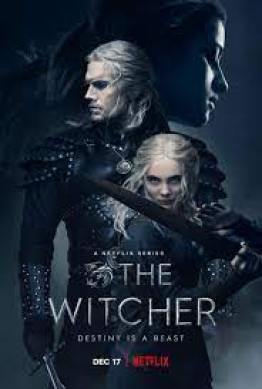 The premise is that Geralt of Rivia (Henry Cavill) is a Witcher, a monster-hunter and hedge mage who has been empowered by chemical mutagens to fight against the horrors of the Continent. The Witchers have been slowly dying out over the past few centuries due to the secrets for their creation being lost. Last season, Geralt rescued Ciri (Freya Allan), Princess of Cintra, from certain death and is now attempting to find shelter for her from the various forces that would use her. Either as a Princess or her mysterious magical bloodline.
The premise is that Geralt of Rivia (Henry Cavill) is a Witcher, a monster-hunter and hedge mage who has been empowered by chemical mutagens to fight against the horrors of the Continent. The Witchers have been slowly dying out over the past few centuries due to the secrets for their creation being lost. Last season, Geralt rescued Ciri (Freya Allan), Princess of Cintra, from certain death and is now attempting to find shelter for her from the various forces that would use her. Either as a Princess or her mysterious magical bloodline.
Yennefer (Anya Chalotra) is a prisoner of Fringellia (Mimi Ndiweni). Her powers are lost, having sacrificed them to unleash fire magic on the invading army of Nilfgaard. The event leaves her traumatized and broken as without her magic, she doesn’t feel like she has anything. The elves of the North are currently suffering a mass persecution and end up joining with Nilfgaard to fight the North. The primary focus of their alliance being Francesca Findabair who wishes to be the mother of the first pure-blooded elf in years.
There’s multiple plots running through the storyline ranging from the political situation in the Continent, Ciri’s training as a witcher, and the incorporation of a demon who is basically Baba Yaga of Slavic folklore. The best episode of Season Two is definitely “A Grain of Truth”, which is an adaptation of one of the short stories that parodied Beauty and the Beast. I liked it much better than the majority of episodes because I enjoyed the hefty amount of book content. It’s not that the show is bad but it misses some of Sapkowski’s special touches.
The best parts of Season Two are definitely Henry Cavill and Freya Allan’s performances. Henry Cavill continues to carry the show and pretty much manages to do a combination of both the book as well as video game Geralts. Freya Allan is allowed to show a little more of her age, being twenty, and acts less like the fourteen-year-old she’s supposed to be. We understand she’s trying to cope with her trauma and there’s several really good scenes about her dealing with the aftermath of Cintra’s acking.
Unfortunately, the Yennefer plots are just outright terrible. Anya Chalotra was the central character in many ways of season one but barely has a presence this time around. She also does some things that her book counterpart would never do and makes her look fairly reprehensible. Even more egregious is the fact that there’s a distinct lack of Jaskier (Joey Batey). One of the single most entertaining characters in the franchise is absent for much of the series and the difference between the episodes where he’s not and is present are tremendous.
 I have mixed feelings regarding Nilfgaard’s handling in the show as well. I felt the games whitewashed the group considerably when they were a terrifying force representing slavery, imperialism, colonialism, and the embodiment of all of Poland’s conquerors. The show manages to capture its darkness but weirdly acts like they’re less repulsive than they are and we should sympathize with them.
I have mixed feelings regarding Nilfgaard’s handling in the show as well. I felt the games whitewashed the group considerably when they were a terrifying force representing slavery, imperialism, colonialism, and the embodiment of all of Poland’s conquerors. The show manages to capture its darkness but weirdly acts like they’re less repulsive than they are and we should sympathize with them.
It doesn’t help the show also royally botches the handling of the elven persecution. If you’re going to use Holocaust and pogrom imagery for the destruction of a minority, maybe you shouldn’t try to make it morally ambiguous. At one point, the elves engage in murder of human babies that play into the worst blood libel. Which is just, man what? I don’t even know how to react to that but Nilfgaard and the elves can both go to hell.
In conclusion, this is still a show with excellent production values and a tremendous basis with the Sapkowski novels. However, the show continues to drift away from the book material that hurts its enjoyment factor. Some of the actors are much better than others but its the tryhard-ness in some of its edginess that hurts the overall story. Its ironic but for one of the best grimdark series ever, they keep trying to push the envelope and just induce apathy.
The post TV Show Review – The Witcher Season 2 appeared first on BEFOREWEGOBLOG.
March 28, 2022
Review – Travels in the Dark by Jordan Loyal Short
TRAVELS IN THE DARK by Jordan Loyal Short is the third and final novel in the Dreadbound Ode. The Dreadbound Ode is a fascinating mix of space opera, dark fantasy, and politics that reminds me strongly of Warhammer 40K. It is a dark and somber world where an oppressive empire beats down the Medieval-like impoverished worlds in it sphere of influence. Worse, the Underworld is a literal place and it is full of dead gods as well as regret.
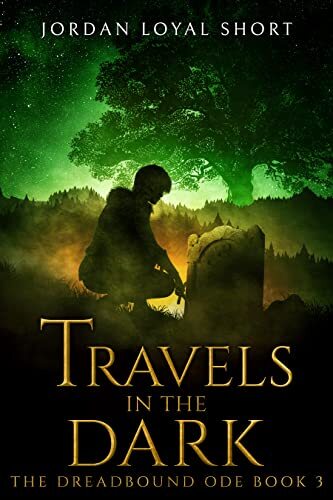 The premise is that our protagonists have really been screwed up by the events of the previous novel. Lyssa is dying of the injuries she sustained trying to finish off the pirates who enslaved her people, Henrik has managed to free himself from slavery but made countless enemies in the process, and Brohr is now totally insane with necromantic powers that are linked to forces darker than can be imagined.
The premise is that our protagonists have really been screwed up by the events of the previous novel. Lyssa is dying of the injuries she sustained trying to finish off the pirates who enslaved her people, Henrik has managed to free himself from slavery but made countless enemies in the process, and Brohr is now totally insane with necromantic powers that are linked to forces darker than can be imagined.
After two relatively grounded and low fantasy science fiction stories, this book amps up the sorcery and supernatural significantly. The Dead Gods are escaping their prison and unleashing the forces of the insane spirits of the Underworld. The sole remaining “good” god (which is a very questionable statement) is manifest but clearly outmatched by the powers arrayed against him. Brohr is also outright using necromancy to raise the dead in hopes of being able to unite with Lyssa.
I think my favorite part of the book is the extended quest in the Underworld by Lyssa to try to get out of it. The Underworld is a place filled with people tormented by their regrets and inability to move on past their deaths. Given the number of people Lyssa killed on her way to getting trapped there, there’s more than a few people who want to pay her back whether or not it is going to endanger everyone.
Things go from bad to worse for our protagonists as they find themselves crippled not only by the impressive forces arrayed against them but also their own horrible personality flaws. Brohr’s obsession with Lyssa is the only thing keeping him going, which drives him to increasingly horrific acts. He’s also the only person who can protect the remaining survivors. Henrik is the Prophet but that is a power that means very little among the power-hungry atheists who head the religion as well as Inquisition.
If I had any complaints about the book, it’s the fact I was really enjoying the low fantasy and politically charged world of the previous books. There’s not much room for political subtlety or moral ambiguity when the entirety of the universe is at stake. I could have read more stories about slavers, pirates, and corruption among the Electors before dark gods. This is a small complaint, though.
There are a lot of twists and turns in this book with all the major plotlines resolved by the end. The characters go through hell, literally, and is all the more interesting. The grand finale is both a satisfying end as well enjoyable story in its own right. It is definitely within the dark fantasy/grimdark genre. Flawed characters, unspeakable horrors, and a bittersweet ending that shows the consequences of our characters’ actions.
Check Out Travels in the Dark
The post Review – Travels in the Dark by Jordan Loyal Short appeared first on BEFOREWEGOBLOG.
March 27, 2022
The Books That Made Us – Fear and Loathing in Las Vegas: A Savage Journey to the Heart of the American Dream by Hunter S. Thompson
I was on a page somewhere just after Barstow when my love for FEAR AND LOATHING IN LAS VEGAS took hold. That love was deep and immediate and while I may have seen the film umpteen times before I read the book, it was the reading of Hunter S. Thompson’s incredible work of gonzo journalism that truly bonded it to my writing DNA. The nature of reality can be a tricky business. We use various fleshy bits to sense and send evidence of an external reality to our brain, only for it to choose what all that input might mean and paint its best guess on our consciousness. That’s sketchy on a good day, but add a few chemicals to the mix and…
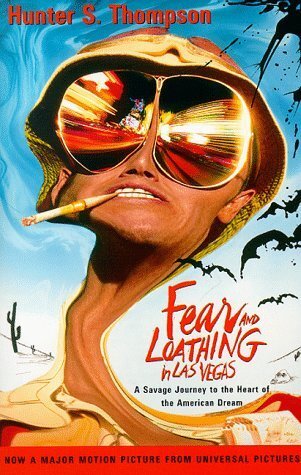 What FEAR AND LOATHING IN LAS VEGAS does remarkably well is to show that, while reality is skewed and twi@jrushingwritessted by whatever intoxicant of the moment happens to be coursing through Raoul Duke’s veins, it’s still portrayed as his reality. Not some other realm. Not some chemical dream. It’s his lived experience. His poor, drug-soaked brain is still trying to do its job. It’s taking in those dulled sensory clues and attempting to sort them with altered, perverted logic. What it paints on his consciousness is just as “real” as his normal, everyday reality, it’s just been filtered through booze and drugs and adrenalin.
What FEAR AND LOATHING IN LAS VEGAS does remarkably well is to show that, while reality is skewed and twi@jrushingwritessted by whatever intoxicant of the moment happens to be coursing through Raoul Duke’s veins, it’s still portrayed as his reality. Not some other realm. Not some chemical dream. It’s his lived experience. His poor, drug-soaked brain is still trying to do its job. It’s taking in those dulled sensory clues and attempting to sort them with altered, perverted logic. What it paints on his consciousness is just as “real” as his normal, everyday reality, it’s just been filtered through booze and drugs and adrenalin.
While I may not have been able to relate to the kaleidoscope reality within the book personally, as I read, I was living those experiences alongside the character and I bought it hook line and sinker. I never felt the need to question the reality Duke was living, even though I knew there was a “real” world outside the one his drug-bound mind was creating for him. All of his experiences, chemical or not, counted as Duke’s reality because it just was the reality he was living. His reality was valid even if what he was experiencing was far-fetched and unsound. This was the key lesson for me from Fear and Loathing in Las Vegas. All reality is constructed… from whatever our gray matter is given to work with. All reality is valid, even if it’s not always sound, and that, I think, can apply to the characters and worlds within our own books. When a conclusion follows logically from its premises, it’s valid. Even if the premises we start with are totally false. For instance in the book, There is a hotel front desk agent talking to Raoul Duke She is a moray eel.
Therefore, front desk agents can be moray eels. That’s ridiculous but hey, that’s what Duke’s brain was making him see. For an argument to be valid and sound, it has to start with premises that are actually true. A magazine needs a journalist to cover the Mint 400. Duke was hired to cover the mint 400. Therefore he’s working as a journalist. Everything checks out. While all reality is subjective, our day-to-day, unaltered perceptions are functionally accepted as true. It’s the best we can do. But, add some mescaline pulled from the trunk of a car, and any soundness in thinking gets carried off by bats. However, even though Duke’s perceptions are growing false as the drugs kick in, his lived reality is still valid. His brain is taking what it can get as premises for reality(This is bat country!) and making conclusions based on those false premises. That bats are real to Duke, even when they’re not. His fear of those bats is real even though there’s nothing to fear. The bats aren’t sound because they don’t exist, but they’re valid because he’s experiencing them and making decisions based on them.
While the soundness may come and go, FEAR AND LOATHING IN LAS VEGAS is written as one solid, valid reality that incorporates being both sober and blasted. Focusing on validity makes questioning the smaller, individual details of the story a bit pointless. We, as readers, either buy this reality or we don’t and if we buy it, we can just settle in for the ride. Our story vetting is over. That’s a comfortable spot. As writers, when we treat validity as what counts in feelings of realness, both for our writing and for readers, our fantasy worlds, heinous hells, and sci-fi future scapes become more alive and easier for readers to accept. In FEAR AND LOATHING IN LAS VEGAS, both the sound and unsound world exist within the story but I think this focus on validity works just as well using our own reality, outside the book, as the sound world.
Remember, these are the worlds our characters live in. These are their realities, even if they aren’t “sound” compared to our own. That’s okay. There’s still a logic involved. Their brains are still sorting info and making decisions based on their experiences of their world. In RADIO, I used this lesson as gospel. The main character, Marduk, lives and operates in a world in which gods are semi-immortal mind control artists. He’s one of them so that goes without question. That reality is valid and within the workings of the story, also sound.
He’s proof. He, too, spends a lot of time inside other people’s minds. That internal reality is also valid and sound. He’s actively doing it. It’s coming from true premises within the story. However, he also spends a lot of time being very, very high on opium. But, again, it’s his experiences and his “real” reality, despite the outer world of the story being his “sound” reality. The euphoria he feels is valid. And while all of the above is unsound compared to our real world, treating it as a valid reality, writing it as a valid reality, helps the reader experience it as a valid reality. My personal goal as a writer isn’t to simply immerse my readers in a pretend world with pretend characters. That can be fun but it’s just not my jam.
My goal is to immerse them into real-feeling moments in a real-feeling character’s life. Into the life they’re living in the world in which they exist. Even if that moment or world is totally fantastical. Even if that character is a many thousands of years old fake god with mind control powers. The hope is that if I can maintain validity for my world and characters, then the reader doesn’t have to do the work of “buying” what’s going on as the story progresses. They can just relax and live in the world along with the characters. It’s how a kid from the sticks could sidle up to a Las Vegas bar between Raoul Duke and a lizard woman and just go with the flow.
I was asked to accept that this was really what this character was experiencing and because every bizarro moment in FEAR AND LOATHING IN LAS VEGAS was presented as valid, I did.
Check out Fear and Loathing in Las Vegas: A Savage Journey to the Heart of the American Dream by Hunter S. ThompsonAbout the Author J · Rushing is an American writer whose work blends elements of adventure, fantasy, science fiction, and horror to create worlds that feel as familiar as they do foreign.
J · Rushing is an American writer whose work blends elements of adventure, fantasy, science fiction, and horror to create worlds that feel as familiar as they do foreign.
He is a musician, amateur luthier, and former teacher who first traded the microbreweries and Cascade Mountains of the Pacific Northwest for the bustle and beauty of Paris. After nearly three years in the City of Light he and his wife settled near Zürich, Switzerland where they spend much of their time traveling and immersing themselves in the outdoors.
Websitehttps://jrushingwrites.com/TwitterjrushingwritesThe post The Books That Made Us – Fear and Loathing in Las Vegas: A Savage Journey to the Heart of the American Dream by Hunter S. Thompson appeared first on BEFOREWEGOBLOG.
March 26, 2022
Review – Blade Runner 2019, Vol. 1: Los Angeles by Michael Green, Mike Johnson, Andres Guinaldo
From the Rain-Soaked Future of Greater Los Angeles
BLADE RUNNER 2019 VOLUME ONE: LOS ANGELES is a graphic novel set in the world of Ridely Scott’s BLADE RUNNER. Wow, imagine that. I’ve always been a little leery of tie-in fiction because it’s rarely done well. Very often, it’s just a cash grab and the stories told are irrelevant to the larger narrative. But this book changed my mind.
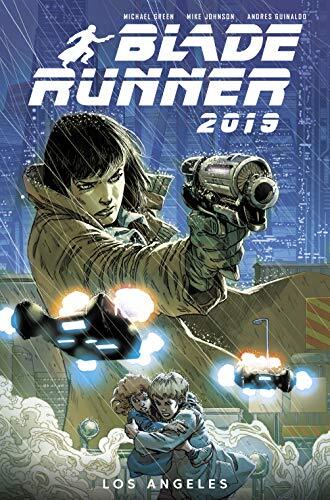 You see, I absolutely love Blade Runner and think of it as one of the defining works of science fiction let alone cyberpunk. I even would go so far as to say it’s an improvement over Do Androids Dream of Electric Sheep. Blasphemy, I know. I’m going to state that Blade Runner 2019 blew my expectations away.
You see, I absolutely love Blade Runner and think of it as one of the defining works of science fiction let alone cyberpunk. I even would go so far as to say it’s an improvement over Do Androids Dream of Electric Sheep. Blasphemy, I know. I’m going to state that Blade Runner 2019 blew my expectations away.
Part of what makes the book work is the fact it doesn’t attempt to tell the story of Deckard and Rachel or any other existing canon character. Instead, it focuses on Ash, a South Asian American Blade Runner who is only able to function due to an artificial spine. Ash hates Replicants and sells their body parts after retiring them. Having grown up in the worst sort of environment, she vents her frustration on those who she believes are toys of the rich.
Irony abounds as one of the remaining Earth oligarchs hires her to track down his missing daughter. Ash wants nothing to do with the super-rich but finds her superiors aren’t giving her a choice. It doesn’t help that the case (initially) doesn’t have anything to do with Replicants. From there, we get a delightfully Chinatown-esque mystery that involves a terrified mother, Replicants, and parental kidnapping.
The art is a major reason this book is fantastic and Ash is a beautifully designed character. However, the entire Blade Runner world in all its post-environmental collapse glory is a sight to behold. While I question why any uninhabited tropical island can exist on this place and not be full of the wealthy, I otherwise have no complaints about this work. The action is crisp but the art is particularly beautiful in bringing to life the hellish world of technology gone amuck alongside wretched hives.
Ash is a fantastic protagonist and successfully invokes all the film noir tropes that made the original Blade Runner work so well, but updated for the 21st century (in both senses of the word). She has a lot of interesting character development over the course of the first volume but also doesn’t make any dramatic changes. Her interactions with Replicants are colored by her own bigotries but she’s also aware that they might be the lesser evil in the long run compared to the super-rich.
Check Out Blade Runner 2019The post Review – Blade Runner 2019, Vol. 1: Los Angeles by Michael Green, Mike Johnson, Andres Guinaldo appeared first on BEFOREWEGOBLOG.



